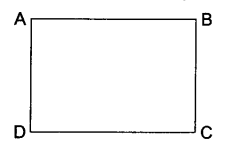Important Questions for Class 6 Science Chapter 10 Motion and Measurement of Distances
Important Questions for Class 6 Science Chapter 10 Motion and Measurement of Distances is given in this article. The answers of these important questions is prepared by our expert teachers as per the latest NCERT book and CBSE guidelines. Practicing these questions before the exam will help students to get excellent marks in the exam. Students can also download PDF of Class 6 Science Chapter 10 Motion and Measurement of Distances important questions and answers from the links below.
Motion and Measurement of Distances Class 6 Important Questions and Answers
Below we have complied the Class 6 Science Chapter 10 Motion and Measurement of Distances important questions with answers. These important questions are divided into three parts. They are – Very short questions, short questions and long important question. CBSE important Questions for Class 6 Science will help to score more marks in your CBSE Board Exams.
Very Short Answer Type Questions
1. Are senses reliable for accurate measurement?
Answer: Our senses are not reliable for accurate measurement.
2. Why can hand span and arm length not be used as standard units of length?
Answer: because these vary from person to person.
3. How many centimetres are there in 1 m?
Answer: 100 cm.
4. Name the measuring device which can be used for measuring the girth of a tree.
Answer: Measuring tape.
5. Give one example of linear motion.
Answer: Motion of stone falling from a certain height.
6. Give an example of circular motion.
Answer: Motion of arms of watch.
7. Name the types of motion in which a body moves along a straight path
Answer: Rectilinear or linear motion.
8.Find the length and breadth of given rectangle in mm and cm.

Answer: Using measuring scale (15 cm scale), Length AB = 3 cm and breadth BC = 2 cm.
AB = 3 × 10 = 30 mm
BC = 2 × 10 = 20 mm.
9.Give the unit for measuring the following:
(a) Distance between Delhi and Jaipur.
(b) Thickness of a coin.
(c) Length of your eraser.
(d) Length of your shoe lace.
Answer:
(a) Kilometre
(b) Millimetre
(c) Centimetre
(d) Centimetre
10. Name the device used to measure the following:
(a) Size of your shoulder.
(b) Size of your wrist.
(c) Your height.
(d) Your weight.
(e) Cloth for curtain.
(f) Circumference of round table.
Answer:
(a) Measuring tape
(b) Measuring tape
(c) Measuring tape
(d) Weighing balance
(e) Metre scale or measuring tape
(f) A long thread or measuring tape.
Short Answer Type Questions
1. State two precautions to be observed while measuring length with the help of a metre scale.
Answer: Two precautions are:
(i) The initial point of distance must coincide with the zero reading of metre scale.
(ii) The eye should be kept in line with the point of measurement.
2. Define rest and motion.
Answer: The objects which do not change their positions with time are said to be at rest. The objects which change their positions with time are said to be in motion.
3. Define the term standard unit.
Answer: The unit that could be used everywhere as a basic unit of measurement is called a standard unit.
4. How can a measured length be expressed?
Answer: Each measurement has:
(i) A number describing the numerical value.
(ii) The unit in which that quantity is measured.
5. Give one example each of the following types of motion:
(a) Linear
(b) Translation
(c) Circular
(d) Periodic.
Answer:
| Types of motion | Example |
| (a) Linear | motion of stone falling |
| (b) Translatory | buses |
| (c) Circular | ceiling fan |
| (d) Periodic | pendulum of clock |
Long Answer Type Questions
1. Why do we need standard unit for measurement?
Answer: We need standard unit for measurement to make our judgement more reliable and accurate. For proper dealing, measurement should be same for everybody. Thus there should be uniformity in measurement. For the sake of uniformity we need a common set of units of measurement, which are called standard units. Nowadays SI units are used in science and technology almost universally.
2. What type of motion do the following objects have?
(a) the galloping of a horse
(b) the needle of a sewing machine
(c) the movements of a mosquito
(d) the blades of an electric fan
(e) the smoke from a lighted dhoopbatti
(f) wheels of moving car.
Answer:(a) The galloping of a horse: Linear motion.
(b) The needle of a sewing machine: Periodic motion.
(c) Movement of a mosquito: Random motion.
(d) Blade of an electric fan: Circular motion.
(e) The smoke from a lighted dhoopbatti: Random motion.
(f) Wheels of moving car: Linear motion and Rotational motion.
3. Give two examples for each of the following motions:
(i) Linear motion
(ii) Spinning motion
(iii) Oscillatory motion
(iv) Periodic motion
(v) Vibrational motion
(vi) Circular motion
(vii) Random motion
Answer:
(i) Linear motion: (a) Rolling of ball on ground, (b) Moving of bicycle on road,
(ii) Spinning motion: (a) Rotating fan, (b) Wheel of sewing machine.
(iii) Oscillatory motion: (a) Pendulum of clock, (b) Motion of a child on a swing,
(iv) Periodic motion: (a) Pendulum of clock, (b) Motion of a swing, heartbeat.
(v) Vibrational motion: (a) String of a guitar, (b) Surface of drums.
(vi) Circular motion: (a) Rotation of fan, (b) Bicycle wheel.
(vii) Random motion: (a) Motion of football players, (b) Movement of mosquito.